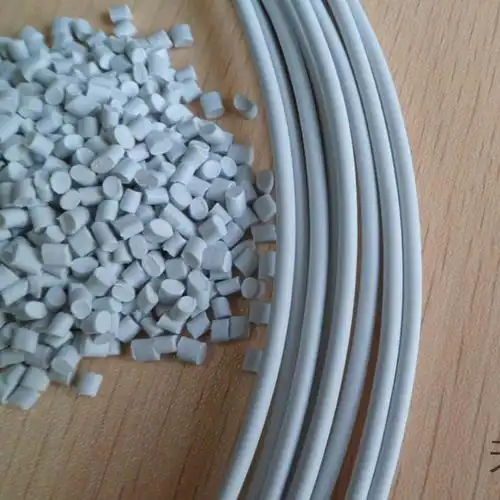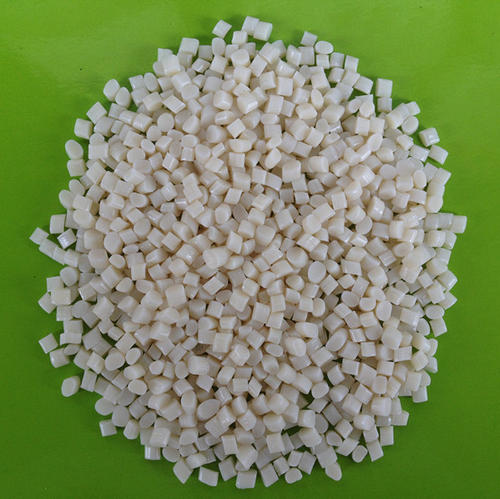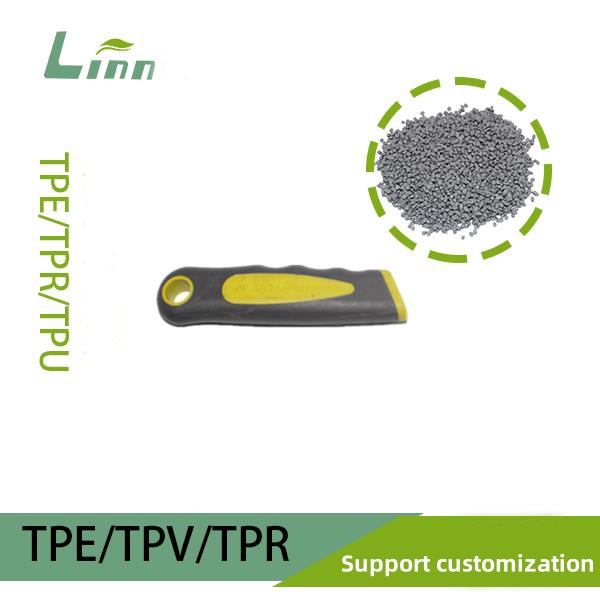As someone who’s spent years knee-deep in the world of polymer processing, I’ve seen the injection molding industry evolve dramatically. Thermoplastic elastomers (TPEs), with their rubber-like flexibility and thermoplastic processability, have become a staple in products ranging from medical tubing to automotive seals. One question I hear more and more from manufacturers, engineers, and even curious startups is whether TPE soft rubber injection molding can be fully automated. It’s a practical concern—automation promises efficiency, cost savings, and consistency, but TPEs can be tricky to work with. Let me share my insights, drawn from hands-on experience, to help you understand the possibilities, challenges, and steps to make automation a reality.

Why Automation Matters for TPE Injection Molding
Before diving into the nuts and bolts, let’s talk about why automation is such a hot topic. TPEs are prized for their versatility—soft, stretchy, and recyclable, they’re used in everything from grippy phone cases to flexible medical components. But injection molding TPEs, especially soft grades (think Shore 20A to 60A), can be labor-intensive due to their sticky nature, precise processing needs, and post-molding requirements. Automation could streamline production, reduce human error, and cut costs, especially for high-volume runs.
In my career, I’ve worked on projects where manual processes slowed down production or led to inconsistent quality. For instance, a client producing TPE grips for tools struggled with manual demolding, which caused defects and delays. The question isn’t just can TPE molding be automated—it’s how to do it effectively. Let’s explore the feasibility, the hurdles, and the tools that make it possible.
The Basics of TPE Injection Molding
To understand automation, we need a quick primer on TPE injection molding. TPEs are processed using standard injection molding machines, where pellets are melted, injected into a mold, cooled, and ejected as a finished part. Soft TPEs, however, have unique traits: they’re flexible, often sticky, and sensitive to processing conditions like temperature and pressure. These properties make automation both desirable (for consistency) and challenging (due to material behavior).
Automation in this context means replacing manual tasks—loading materials, operating machines, demolding parts, inspecting quality, and packaging—with robotic systems, sensors, and software. The goal is a seamless, hands-off process that runs efficiently. From my experience, automation is not only possible but already happening in many TPE molding facilities, though the degree of success depends on several factors.
Can TPE Injection Molding Be Automated?
The short answer is yes, TPE soft rubber injection molding can be automated, and I’ve seen it done effectively in industries like automotive and consumer electronics. However, it’s not a plug-and-play solution. Soft TPEs pose unique challenges compared to rigid plastics like ABS or PP, and automation requires careful planning, equipment, and expertise. Let’s break down the key areas where automation can be applied and how to make it work.
1. Material Handling and Feeding
The first step in injection molding is getting TPE pellets into the machine. Manual loading is common in smaller operations, but it’s prone to errors like contamination or inconsistent feeding. Automated material handling systems—like vacuum loaders, gravimetric blenders, and dehumidifying dryers—can take over this task.
How it works: Automated loaders transport TPE pellets from storage to the machine’s hopper, while dryers remove moisture to prevent defects like bubbles. In one project, we implemented a centralized material handling system for a TPE medical tubing line, reducing contamination risks and cutting setup time by 30%.
Challenges: Soft TPEs can be hygroscopic (absorbing moisture), requiring precise drying. Some TPEs also clump in hoppers due to their tackiness. Choosing the right equipment, like low-shear conveyors, is critical.

2. Injection Molding Process
The core of the process—melting, injecting, and cooling—can be fully automated with modern injection molding machines equipped with programmable logic controllers (PLCs). These machines adjust parameters like temperature, pressure, and cycle time in real-time, ensuring consistency for TPEs.
How it works: Advanced machines, like those from Engel or Arburg, use sensors to monitor melt temperature, injection speed, and mold pressure. For a TPE automotive seal project, we used a servo-driven machine with closed-loop control, achieving ±0.1% weight consistency across thousands of parts.
Challenges: Soft TPEs require precise temperature control (typically 160–220°C) to avoid degradation or sticking. Over-automation without proper tuning can lead to issues like short shots or flash. I’ve seen projects fail when operators relied too heavily on default settings without optimizing for the specific TPE grade.
3. Demolding and Part Removal
Demolding soft TPE parts is where things get tricky. Their flexibility and stickiness can cause parts to cling to molds, making manual removal labor-intensive. Robotic arms and end-of-arm tooling (EOAT) are game-changers here.
How it works: Six-axis robots or sprue pickers can remove TPE parts from molds with precision. For a TPE grip project, we used a collaborative robot with custom grippers to gently extract soft parts without tearing. The robot was programmed to handle varying part geometries, boosting throughput by 25%.
Challenges: Sticky TPEs may require mold release agents or textured mold surfaces to aid ejection. Designing EOAT for soft, deformable parts is also complex—I’ve seen robots damage parts by gripping too tightly. Testing and iteration are key.
4. Quality Inspection
Ensuring TPE parts meet specs (e.g., no voids, correct dimensions) is critical. Manual inspection is slow and inconsistent, but vision systems and automated gauges can take over.
How it works: Machine vision cameras check for defects like flash or incomplete fills, while laser gauges measure dimensions. In a TPE medical device project, we used a vision system to inspect seals for micro-defects, catching issues that human inspectors missed.
Challenges: Soft TPEs can deform during inspection, leading to false readings. Calibration is crucial, and I’ve learned to double-check vision systems with manual spot checks during setup.
5. Post-Processing and Packaging
After molding, TPE parts may need trimming, cleaning, or assembly. Automated systems like conveyor belts, robotic trimmers, and packing machines can handle these tasks.
How it works: Conveyors move parts to trimming stations, where robots remove flash or sprues. For a TPE consumer product line, we used an automated packing system that sorted and boxed parts, cutting labor costs by 40%.
Challenges: Soft TPEs can stick to conveyors or get damaged during trimming. Non-stick coatings and gentle handling systems are essential.

Factors That Impact Automation Success
From my years in the field, I’ve learned that automating TPE molding isn’t just about buying robots—it’s about aligning equipment, materials, and processes. Here’s a table summarizing the key factors:
|
Factor |
Description |
Impact on Automation |
Tips for Success |
|---|---|---|---|
|
TPE Properties |
Stickiness, flexibility, and sensitivity to heat and shear. |
Sticky or soft TPEs complicate demolding and handling. |
Select TPE grades with good mold release; test extensively. |
|
Mold Design |
Mold complexity, surface finish, and ejector systems. |
Complex molds may require custom robotic solutions. |
Use polished or coated molds for easier release. |
|
Equipment Capability |
Precision of molding machines, robots, and sensors. |
Low-end machines may lack the control needed for TPEs. |
Invest in servo-driven machines and high-quality EOAT. |
|
Production Volume |
Scale of production (low vs. high volume). |
High-volume runs justify automation costs. |
Start with semi-automation for low-volume projects. |
Practical Tips from My Experience
Having automated several TPE molding lines, here are some lessons I’ve learned the hard way:
Start Small: If you’re new to automation, begin with one process (e.g., material handling) before fully automating. In a TPE cable project, we phased in automation, starting with a robotic demolder, which helped us iron out kinks without overwhelming the team.
Choose Compatible TPEs: Some TPEs are formulated for easier processing. I always ask suppliers for grades with built-in mold release or low stickiness.
Invest in Training: Automation requires skilled operators to program and maintain systems. I’ve seen projects stall because staff weren’t trained on robotic programming.
Test, Test, Test: Soft TPEs behave unpredictably. Run pilot tests to optimize cycle times and robot movements. In one case, we reduced defects by 15% by tweaking robot speed.
Work with Experts: Partner with automation integrators or machine suppliers like Fanuc or Wittmann Battenfeld. They can recommend setups tailored to TPEs.
Real-World Examples
Let me share a couple of stories from my career. In a project for TPE medical tubing, we automated the entire process—from material drying to packaging—using a centralized control system. Robots handled demolding and inspection, cutting cycle time by 20% and defects by 10%. The key was using a TPE grade optimized for automation, with low tackiness and consistent flow.
In another case, a client producing TPE phone cases struggled with manual demolding due to the parts’ softness (Shore 30A). We introduced a six-axis robot with custom vacuum grippers, which not only sped up production but also eliminated tearing. However, we hit a snag when the TPE stuck to the mold—adding a mold release agent solved it, but it took a few trials to get right.

Challenges and Limitations
Automation isn’t a magic bullet. Here are some hurdles I’ve encountered:
Sticky TPEs: Soft TPEs can cling to molds or robots, requiring specialized tooling or coatings.
High Upfront Costs: Robots, vision systems, and advanced machines are expensive. For low-volume runs, the ROI may take years.
Complex Molds: Multi-cavity or overmolded TPE parts can complicate robotic demolding, requiring custom solutions.
Material Variability: Batch-to-batch differences in TPEs can affect automation consistency. I’ve seen robots struggle when a new TPE batch had slightly different flow properties.
Maintenance Needs: Automated systems require regular upkeep. Downtime for repairs can disrupt production if you’re not prepared.
If your operation is small-scale or uses highly customized molds, semi-automation (e.g., robotic demolding but manual inspection) might be more practical.
The Future of TPE Molding Automation
The industry is moving fast, and I’m excited about what’s coming. Collaborative robots (cobots) are making automation more accessible for smaller manufacturers, as they’re easier to program and safer to use alongside humans. AI-driven process control is also emerging, with systems that self-adjust molding parameters based on real-time data. In a recent trade show, I saw a demo of an AI system optimizing TPE injection cycles, reducing waste by 12%. These advancements could make full automation more feasible, even for tricky soft TPEs.
Wrapping Up
After years of working with TPEs, I can say with confidence that automating TPE soft rubber injection molding is not only possible but increasingly common. From material handling to quality inspection, modern technology—robots, vision systems, and smart machines—can transform your production line. The key is understanding your TPE’s properties, investing in the right equipment, and testing thoroughly to avoid pitfalls like sticking or defects. While challenges like cost and material variability exist, the benefits of automation—speed, consistency, and cost savings—are well worth the effort for most high-volume applications.
If you’re considering automation for your TPE molding operation, don’t rush in blindly. Start with a clear plan, consult with equipment suppliers, and lean on your material provider for guidance. With the right approach, you can turn a complex process into a streamlined, efficient one that sets your production apart.

Related Questions and Answers
Q: Is automation cost-effective for small-scale TPE molding?
A: For low-volume runs, full automation may not justify the cost. Start with semi-automation, like robotic demolding, and scale up as production grows.
Q: What’s the best robot for TPE demolding?
A: Six-axis robots (e.g., Fanuc, Yaskawa) with custom EOAT are ideal for soft TPEs. Ensure grippers or vacuum systems are designed for flexible, sticky parts.
Q: How do I prevent TPE parts from sticking during automated demolding?
A: Use mold release agents, polished or coated molds, or TPE grades with built-in release properties. Test different combinations to find what works.
Q: Can automation handle overmolding with TPEs?
A: Yes, but it requires precise robotic systems to place inserts and remove parts. Work with an automation integrator to design a system for your specific molds.





